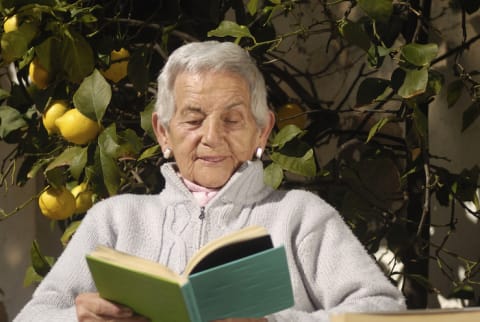Advertisement


“Neuroplasticity is a constant feature of the very essence of human behavior.”
Sometimes called the founder of modern neuroscience, Santiago Ramón y Cajal stated, in 1928, that "in adult centres the nerve paths are something fixed, ended, immutable. Everything may die, nothing may be regenerated. It is for the science of the future to change, if possible, this harsh decree.”
For decades, the idea that the human brain can't generate new cells after having reached adulthood was gospel. Once you hit 25, your brain starts the long process of neural decline. But in 1980, a scientist named Ian Robertson gave the idea a second look.
Working with stroke victims, he saw firsthand the therapies that helped them recover. Occupational and physical therapy were being administered to patients who had lost brain function. So, he asked the obvious question: If we know a brain cell destroyed is dead forever, why do these therapies make a difference?
At that point, the answer was "to stop further damage from occurring." But after years of research and pursuit of a different explanation, the idea that the adult brain is malleable has begun to pervade the scientific community, and inform the way we deal with unwanted behavioral patterns, retrain the brain after trauma, and slow cognitive decline.
Key instigators in the changing perception of neuroplasticity in adults Paul Bach-y-Rita and Michael Merzenich created technologies that relied upon the malleability of the brain for their success. Bach-y-Rita developed a therapy that allowed blind people to "see" through vibrations. Brain scans of the congenitally blind people who have reported being able to "see" in three dimensions using this tool suggest that their brains have rewired themselves to process tactile information through the visual cortex.
According to Ramón y Cajal, that should be impossible.
Merzenich co-developed the cochlear implant, which requires the brain of a deaf person to rewire itself in order to receive auditory information from the implant, rather than the non-functioning cochlea.
Brain maps of string players were enlarged in the hands they used for fingering, as compared to non-musicians.
With the changing tide of scientific understanding, our young scientist Robertson has taken up the study of neuroplasticity in earnest: “Neuroplasticity is a constant feature of the very essence of human behavior.”
But what does this mean for us? Well, it's not a magic bullet. It doesn't mean we can turn ourselves into superhuman exercise machines who hate chocolate and read medical journals in our spare time. Our genes still inform our choices, habits, and bodily functions. But if you ask Robertson, we have a lot more control over those so-called "inherited" traits than we might've realized.
“My own crude rule of thumb is a 50–50 split in terms of the influence of nature and that of nurture,” he says. “But we should be very positive about that 50% that’s environmental.”
While it's unclear to what extent we can retrain our brains, and it's still true that the brain grows less adaptable with age, neuroplasticity legitimizes practices like meditation, brain games, and gratitude for the skeptic.
Sounds like it might be time to give the power of positive thinking a second look.
(Quartz)


















